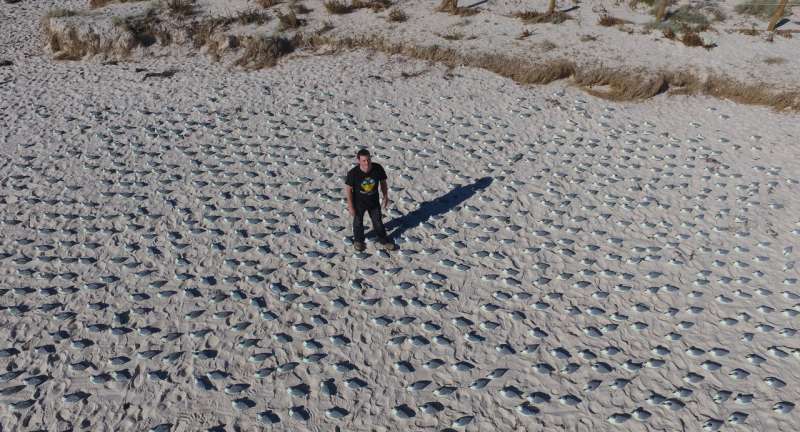#EpicDuckChallenge shows we can count on drones

A few thousand rubber ducks, a group of experienced wildlife spotters and a drone have proven the usefulness and accuracy of drones for wildlife monitoring.
A University of Adelaide study showed that monitoring wildlife using drones is more accurate than traditional counting approaches. This was published today in the journal Methods in Ecology and Evolution.
"For a few years now, drones have been used to monitor different animals that can be seen from above, including elephants, seals and nesting birds. But, until now, the accuracy of using drones to count wildlife was unclear," says the study's lead author, Jarrod Hodgson from the university's Environment Institute and School of Biological Sciences.
"We needed to test the technology where we knew the correct answer. We couldn't use wild animals because we could never be sure of the real number of individuals present."
The answer was a few thousand rubber ducks and the #EpicDuckChallenge.
The researchers made fake bird colonies out of the decoy ducks on a beach in Adelaide, Australia. Experienced wildlife spotters challenged those who counted birds from drone imagery to see which group could get closest to the actual number of fake birds.
Conditions on the day were ideal. The ground spotters counted the fake birds using binoculars or telescopes. Meanwhile, a drone was flown over the beach, taking pictures of the birds from the sky at different heights. Citizen scientists then tallied the number of birds they could see in the photos. The drone approach won.
"We found it is more accurate and more precise to have people count birds from the drone imagery than to do it on location," Mr Hodgson says.
But the scientists weren't finished there. Counting birds in photos takes a long time – and citizen scientists can get tired. So the researchers made a computer algorithm to count the ducks automatically, which yielded results just as good as humans reviewing the imagery.
"With so many animals across the world facing extinction, our need for accurate wildlife data has never been greater," Mr Hodgson says. "Accurate monitoring can detect small changes in animal numbers. That is important because if we had to wait for a big shift in those numbers to notice the decline, it might be too late to conserve a threatened species."
"Our results show that monitoring animals with drones produces better data that we can use to proactively manage wildlife."
The research paper was co-authored by scientists from the Australian Antarctic Division, the University of Tasmania and Monash University.
A video showing some of the #EpicDuckChallenge can be viewed here.
More information: Hodgson JC, Mott R, Baylis SM, et al. Drones count wildlife more accurately and precisely than humans. Methods Ecol Evol. 2018;00:1–8. DOI: 10.1111/2041-210X.12974
Journal information: Methods in Ecology and Evolution
Provided by British Ecological Society

















